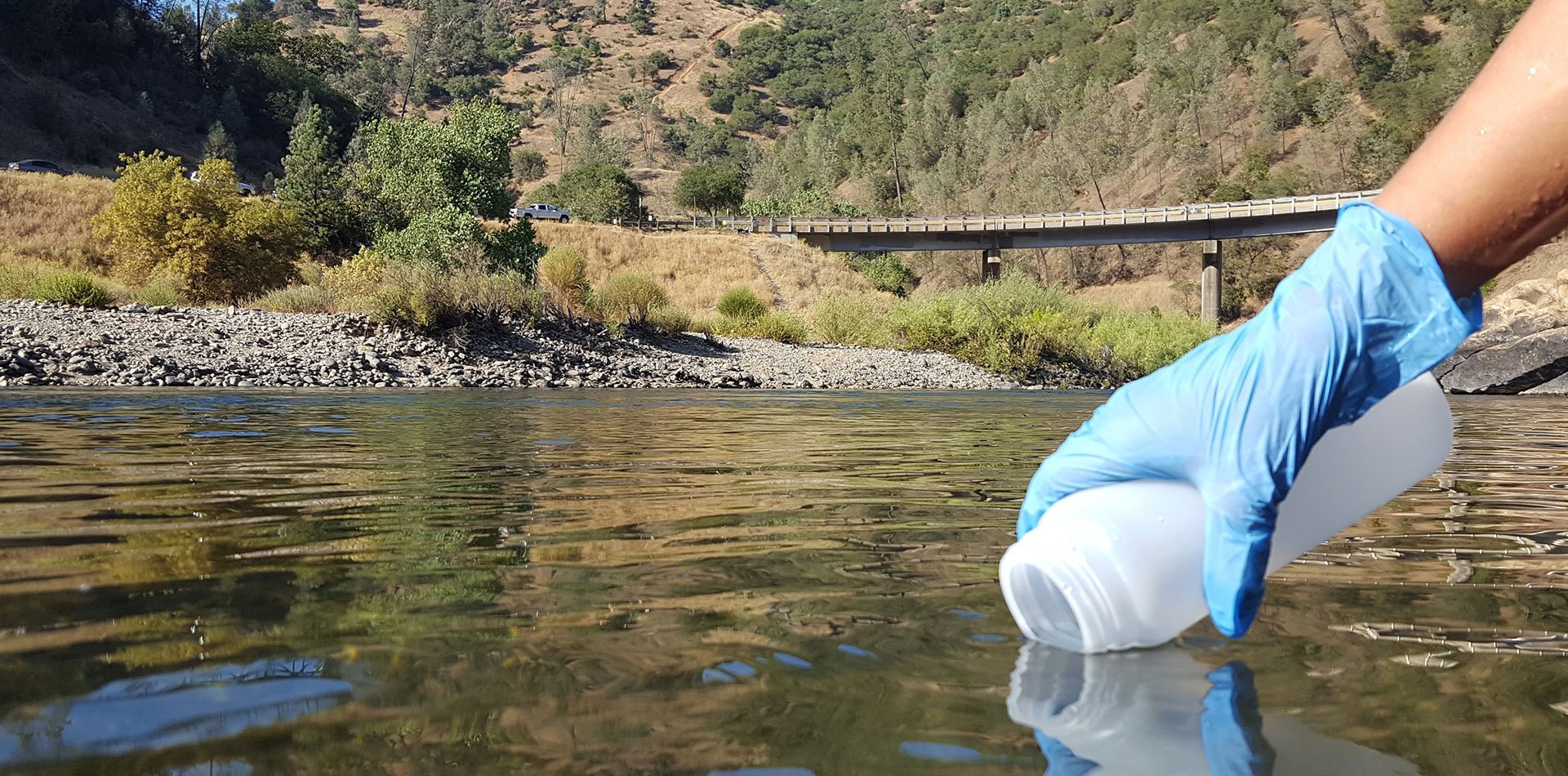Environmental DNA (eDNA) is DNA collected from the environment—water, soil, and air—rather than directly from an organism. All organisms add DNA to their environment by excreting waste, shedding, decomposing, etc. Since short stretches of DNA contain information that identifies species and populations, genetic testing of environmental samples can reveal the presence of animals and plants nearby. This biological monitoring approach is particularly useful for organisms that are rare, hidden, small, or otherwise difficult to directly observe and identify.
Environmental regulations often require monitoring for such organisms, especially protected species. Monitoring for rare organisms can also help an organization operate more smoothly, for example, by detecting a new invasive species before it damages infrastructure or resources. Together, the regulatory and operational settings create a landscape for deciding how to apply eDNA monitoring.
Although eDNA monitoring may have seemed to appear suddenly in 2008 when researchers first detected aquatic invasive species, this approach has been used since the 1990s to monitor things like engineered plants and fecal pollution in rivers. eDNA monitoring is now established as a first-choice approach to inform many environmental challenges, such as locating populations of protected salamanders like the Black Warrior Waterdog or Eastern Hellbender. In the western US, eDNA monitoring for native salmonids and amphibians is routine. In the southeastern US, it’s a standard practice for detecting invasive pythons. But it’s not as simple as just sending some water or dirt to a lab.
While processing samples in the laboratory is central, the complete eDNA Monitoring Workflow (below) includes essential steps before and after the lab work. During the pre-laboratory phase, expert design of eDNA applications and collection strategies ensures the collection of data that are usable and defensible. During the post-laboratory phase, expert analysis and interpretation of eDNA results enables productive coordination with agencies, timely decisions by management, and effective actions to address eDNA findings.
Successfully applying the eDNA Monitoring Workflow requires understanding four areas of expertise that span across all phases:
Regulatory and Operational Landscape of the Environmental Challenge
Federal, state, and local laws set the stage for which protected species to monitor, and regulatory agencies determine what types of monitoring data and methods are acceptable for different environmental permits and decisions. Designing and executing an eDNA application requires experience with agency policies and people because their acceptance of eDNA data varies by regulation, region, and species. Understanding how your organization or project operates is also critical for the eDNA Monitoring Workflow, since an eDNA application’s value depends on things like site accessibility, current monitoring infrastructure, or opportunities to test samples for multiple species. eDNA monitoring isn’t suitable for every scenario, but thoughtful consideration of the regulatory and operational landscape enables investment in applications that can progress efficiently to agency acceptance and be cost-effective.
Ecology of Target Species
Every species’ unique biology and interactions with its environment create the starting point for evaluating the suitability of an eDNA monitoring approach. This includes consideration of conventional survey methods and how they compare to eDNA monitoring with respect to data types (e.g., occurrence, count, condition), sensitivity, logistics, and cost. Detailed knowledge of life histories and habitats is critical when designing eDNA sampling strategies, selecting or adapting methods, and interpreting results. The expanding eDNA scientific literature, data simulations, and pilot studies can all contribute to the design of a successful eDNA monitoring application. Permitted biologists can provide species expertise and couple eDNA with conventional surveys to compare methods when desired.
Ecology of eDNA
Once genetic material leaves an organism, it begins interacting with the environment―think of plant pollen carried by insects or salamander excrement in a burrow. The ecology of eDNA involves properties and processes in four domains—origin, state, transport, and fate—which collectively determine what we can infer from an eDNA detection. Origin describes the physiological sources of eDNA. State describes the physical forms of eDNA. Transport describes how eDNA moves through the environment. Fate describes how eDNA degrades in the environment. Choices and interpretations throughout the eDNA Monitoring Workflow depend on carefully considering the ecology of eDNA in your specific ecosystem. For a more in-depth look at these issues, please see our open access publication in Conservation Genetics.
Technical Challenges of eDNA
eDNA presents many difficulties compared to DNA collected directly from an organism. One is DNA quantity. For a given species, one gram of tissue contains billions of copies of species-identifying DNA whereas one kilogram of water may contain fewer than ten. Genetic testing of such tiny quantities is extremely susceptible to errors that cause false positives or false negatives. Additional difficulties include the mixture of DNA from many species and individuals and the abundance of substances that inhibit genetic tests. These are just a few examples of the technical challenges that must all be addressed in a rapidly changing landscape of genetic equipment, methods, and software. Current technical expertise knits together the steps in the eDNA Monitoring Workflow, addressing challenges before they create problems. For a more in-depth look at these issues, please see our open access publication in Methods in Ecology and Evolution.
ESA’s Integrated Knowledge
Despite the challenges, eDNA monitoring has proven useful for detecting a wide variety of species, and it is often more cost-effective, accurate, and timely than conventional methods. ESA is unique in applying the complete eDNA Monitoring Workflow for our clients because our interdisciplinary team has deep understanding in all four areas of expertise and broad experience at all three workflow phases. Team members integrate their knowledge to provide eDNA results and recommendations that enhance your ability to make critical decisions about species presence, avoidance, and conservation.







